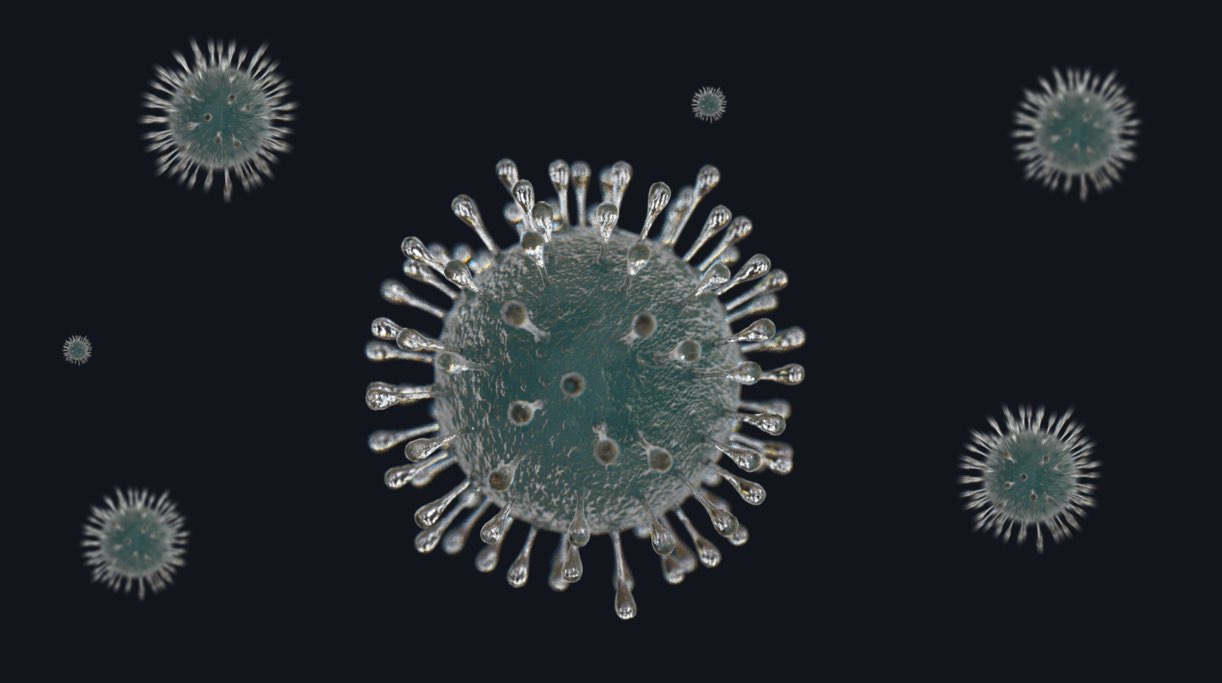
Viruses are so small you could fit billions of them on the head of a pin! Despite their size, they can still be very destructive. Viruses are responsible for a number of diseases and infections, from the common cold to the chickenpox to more severe infections such as SARS, or more recently the novel coronavirus 2019 (pictured above in 3D).
You can think of viruses as self-replicating machines; inside of them they contain genetic information – or the instructional manual – that tells it how to spread across the body.
They do this by binding to and commandeering host cells, using their own resources and cellular architecture to replicate more viruses. Once the host cell dies, it releases these newly created viruses throughout the body.
Viruses can be classified by whether or not their genetic material is made up of DNA or RNA. An example of a DNA virus is the herpes virus which leads to chickenpox, whereas HIV, SARS or even the coronavirus are all RNA viruses, otherwise known as retroviruses.
The good news is that your body is not defenceless against viruses. It contains physical barriers such as your skin or mucous which prevents viruses entering the body. Inside the body, you have an army of immune cells ready to attack the virus. More importantly, you can bolster your immune cell army by receiving vaccines, which to date have seen many viral infections controlled, such as measles, mumps and rubella. Global vaccination programmes have even eradicated viral infections such as polio.
If an individual is infected by a virus, the infection can be managed through antiviral drugs. Even in the case of HIV which causes AIDs, the HIV virus can be managed, so individuals live longer, and healthier. Successful use of HIV antiviral therapy can even reduce the viral load (the amount of the virus detected in your body) to undetectable levels and even prevent transmission.